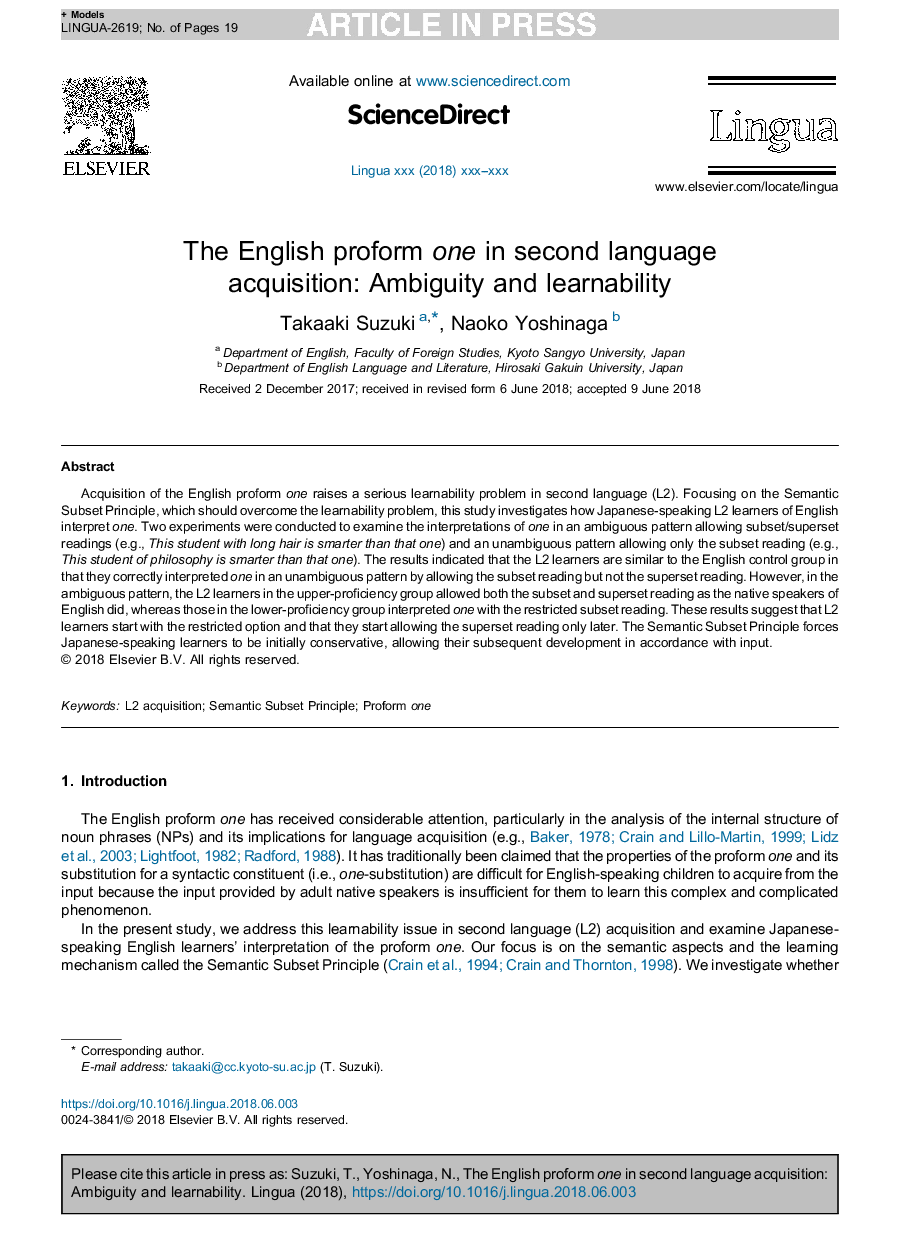| Article ID | Journal | Published Year | Pages | File Type |
|---|---|---|---|---|
| 10153587 | Lingua | 2018 | 19 Pages |
Abstract
Acquisition of the English proform one raises a serious learnability problem in second language (L2). Focusing on the Semantic Subset Principle, which should overcome the learnability problem, this study investigates how Japanese-speaking L2 learners of English interpret one. Two experiments were conducted to examine the interpretations of one in an ambiguous pattern allowing subset/superset readings (e.g., This student with long hair is smarter than that one) and an unambiguous pattern allowing only the subset reading (e.g., This student of philosophy is smarter than that one). The results indicated that the L2 learners are similar to the English control group in that they correctly interpreted one in an unambiguous pattern by allowing the subset reading but not the superset reading. However, in the ambiguous pattern, the L2 learners in the upper-proficiency group allowed both the subset and superset reading as the native speakers of English did, whereas those in the lower-proficiency group interpreted one with the restricted subset reading. These results suggest that L2 learners start with the restricted option and that they start allowing the superset reading only later. The Semantic Subset Principle forces Japanese-speaking learners to be initially conservative, allowing their subsequent development in accordance with input.
Keywords
Related Topics
Social Sciences and Humanities
Arts and Humanities
Language and Linguistics
Authors
Takaaki Suzuki, Naoko Yoshinaga,
